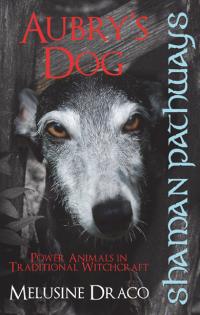
None of us can begin to imagine what it would be like to discover that our dog’s been stolen; but neither can we imagine the terror and fear that the dog must experience on discovering that it’s been removed from its familiar people and surroundings. Unfortunately, the law doesn’t consider dog theft a heinous crime but to those who are victims (human and canine) perhaps we cannot think of a punishment severe enough – because for dog people – dogs are our family. This is where we can resort to a Higher Law – the power of the curse - because we don’t have to have a magical interest/aptitude to be able to throw a curse … all we have to have is hate and passion.
The dog thieves are possibly overlapping in their territories and if all those who have had your beloved pets stolen, then the power of the curse is compounded on these individuals. In this instance, we are talking about the reality of the power of collective ‘prayer’, which cannot be underestimated because there is no doubt as to the magnitude of its effect. This curse is a prayer of a different kind.
It is called The Gage, which is a pledge; something thrown down as in a challenge, from the poem of that name by Walter de la Mare, and demonstrates the power of the words adapted from of a verse from the poem that offers an example of an extremely powerful curse that could be used in the event of someone stealing any pet dog . For example:
O mark me well!
For what my hound befell
You shall pay twenty-fold,
For every tooth
Of his, i’sooth,
Your life in pawn I’ll hold.
The effective placing of this curse requires a personal item belonging to the stolen dog (i.e. fur, tooth, bone, saliva, etc.,) and a photograph. Here we are bringing down a curse that is ‘twenty times’ the number of teeth in the dog’s mouth, which in an average healthy adult is around 42. This means that the sender must weigh in the balance whether the punishment fits the crime; after all, it would be rather extreme if someone had merely given your dog a clout for attempting to ravish their prize-winning bitch!
Cursing, however, is a question of personal responsibility and/or morality, but once thrown it cannot be retracted or negated. That said, the theft of any dog and removing it from its home environment for financial gain, I would see the curse to be justifiable if the thieves lose their most priceless possession(s) as a result. For this particular curse it is necessary to produce a small pouch containing the fur and photograph of the dog to be held tightly while reciting the above curse – and keep it safe. And if everyone whose dog has been stolen were to throw this curse, the results will be compounded on the heads of the guilty parties according to Higher Law.
Remember that even the mildest ‘loss’ magnified 20 x 42 is going to have some serious repercussions.
Taken from Shaman Pathways: Aubrey’s Dog – Power Animals in Traditional Witchcraft by Melusine Draco and published by Moon Books. ISBM 076 1 78099 724 7 : UK£4.99/US$9.95 : pages 84.
.



 RSS Feed
RSS Feed